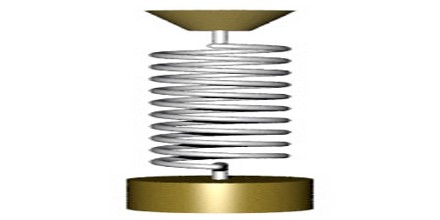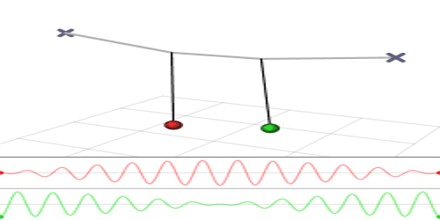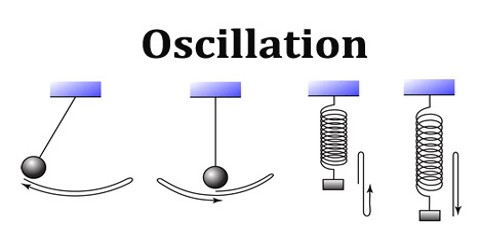Oscillation
Definition
Oscillation is a repeating fluctuation in a physical object or quantity. Oscillation in a device called an oscillator is usually a back and forth motion over a central neutral point, created by changes in energy. In a pendulum-driven clock, for example, the oscillation is the back and forth movement of the pendulum. It may be mechanical or electronic, but all work on the same principles. Other devices based on the principles of oscillation include the oscillograph and the oscilloscope.

It occur not only in mechanical systems but also in dynamic systems in virtually every area of science: for example the beating human heart, business cycles in economics, predator–prey population cycles in ecology, geothermal geysers in geology, vibrating strings in musical instruments, periodic firing of nerve cells in the brain, and the periodic swelling of Cepheid variable stars in astronomy.
The simplest mechanical oscillating system is a mass, subject to the force of gravity, attached to a linear spring. The system is in an equilibrium state when the weight of the mass is balanced by the tension of the spring.

Applications of Oscillation
Oscillation is the periodic variation, typically in time, of some measure as seen, for example, in a swinging pendulum. The term vibration is sometimes used more narrowly to mean a mechanical oscillation but sometimes is used to be synonymous with oscillation. Oscillations occur not only in physical systems but also in biological systems and in human society.
One type of pendulum is a metronome, which registers the tempo or speed of music. Housed in a hollow box shaped like a pyramid, a metronome consists of a pendulum attached to a sliding weight, with a fixed weight attached to the bottom end of the pendulum. It includes a number scale indicating the number of oscillations per minute, and by moving the upper weight, one can change the beat to be indicated.

The simplest mechanical oscillating system is a weight attached to a linear spring subject to only weight and tension. Such a system may be approximated on an air table or ice surface. The system is in an equilibrium state when the spring is static. In the earlier illustration of the spring suspended from a ceiling, if the string is pulled to a position of maximum displacement and then released, it will, of course, behave dramatically at first. Over time, however, its movements will become slower and slower, because of the damping effect of frictional forces.
The oscillation of a rubber band will be even more appreciable if a weight is attached to the “free” end—that is, the end hanging downward. This is equivalent, on a small scale, to a bungee jumper attached to a cord.
Reference: scienceclarified.com, streetdirectory.com, techtarget.com, wikipedia.
















